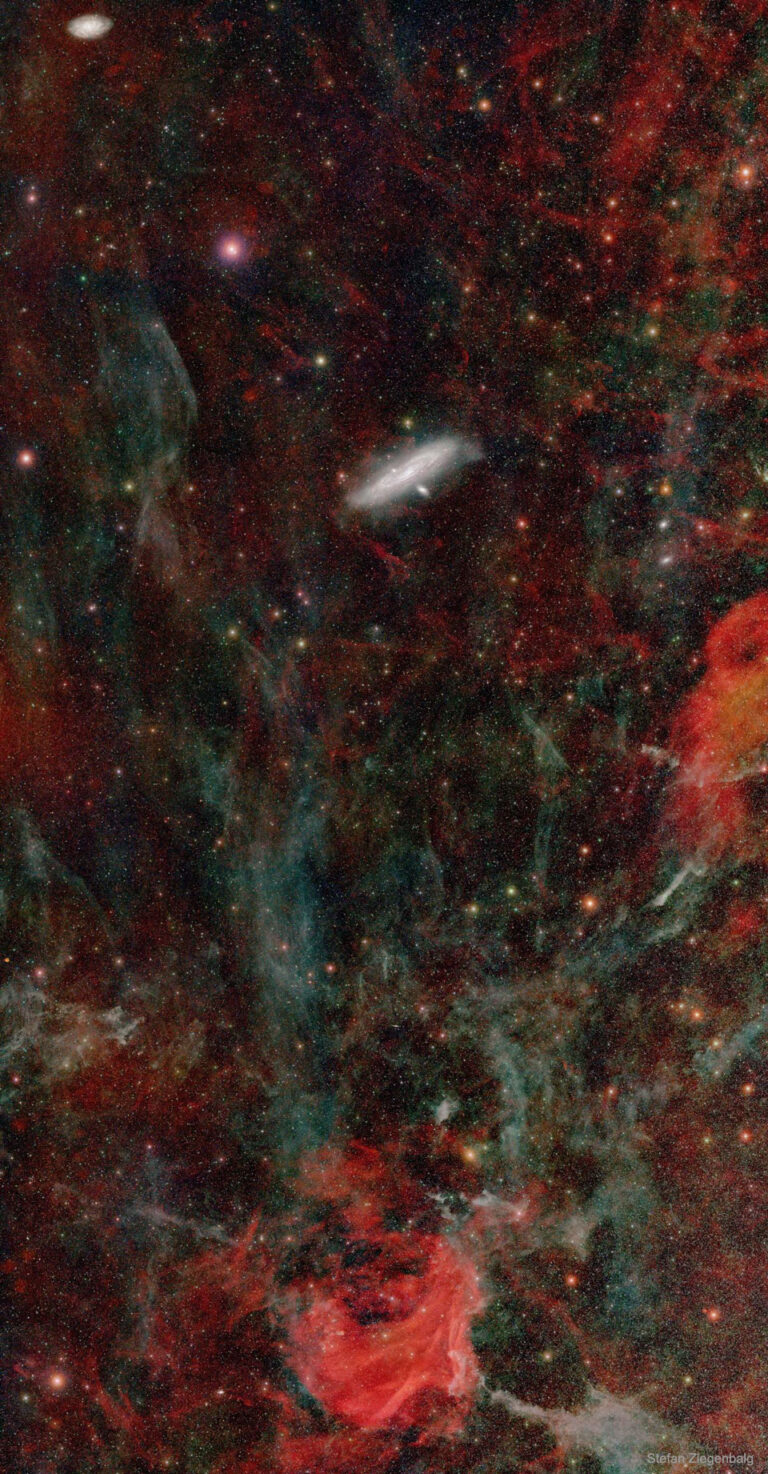NASA的图像有助于解释大质量黑洞的进食习惯
来自NASA已退役的斯皮策太空望远镜的数据为科学家们提供了新的见解,解释了为什么一些超大质量黑洞的发光方式与其他黑洞不同。

来自NASA已退役的斯皮策太空望远镜的数据为科学家们提供了新的见解,解释了为什么一些超大质量黑洞的发光方式与其他黑洞不同。

2023年3月22日 M31: The Andromeda Galaxy Image Credit & Copyright: Abdullah Al-Harbi Explanation: How far can you see? The most distant object easily visible to the unaided eye is M31, the great Andromeda Galaxy, over two million light-years away. Without a telescope, even this immense spiral galaxy appears as an unremarkable, faint, nebulous cloud in the constellation Andromeda. But a bright white nucleus, dark winding dust lanes, luminous blue spiral arms, and bright red emission nebulas are recorded in this stunning fifteen-hour telescopic digital mosaic of our closest major galactic neighbor. But how do we know this spiral nebula is really so far away? This question was central to the famous Shapley-Curtis debate of 1920. M31’s great distance was determined in the 1920s by observations that…

2022年7月11日 Andromeda over the Sahara Desert Credit & Copyright: Jordi Coy Explanation: What is the oldest thing you can see? At 2.5 million light years distant, the answer for the unaided eye is the Andromeda galaxy, because its photons are 2.5 million years old when they reach you. Most other apparent denizens of the night sky — stars, clusters, and nebulae — appear as they were only a few hundred to a few thousand years ago, as they lie well within our own Milky Way Galaxy. Given its distance, light from Andromeda is likely also the farthest object that you can see. Also known as M31, the Andromeda Galaxy dominates the center of the featured zoomed image, taken from the Sahara Desert in Morocco last…

2021年9月8日 The Deep Sky Toward Andromeda Image Credit & License: Stefan Ziegenbalg Explanation: What surrounds the Andromeda galaxy? Out in space, Andromeda (M31) is closely surrounded by several small satellite galaxies, and further out it is part of the Local Group of Galaxies — of which our Milky Way galaxy is also a member. On the sky, however, gas clouds local to our Milky Way appear to surround M31 — not unlike how water clouds in Earth’s atmosphere may appear to encompass our Moon. The gas clouds toward Andromeda, however, are usually too faint to see. Enter the featured 45-degree long image — one of the deeper images yet taken of the broader Andromeda region. This image, sensitive to light specifically emitted by hydrogen gas,…

2020年11月25日 Andromeda over Patagonia Image Credit & Copyright: Gerardo Ferrarino Explanation: How far can you see? The Andromeda Galaxy at 2.5 million light years away is the most distant object easily seen with your unaided eye. Most other apparent denizens of the night sky — stars, clusters, and nebulae — typically range from a few hundred to a few thousand light-years away and lie well within our own Milky Way Galaxy. Given its distance, light from Andromeda is likely also the oldest light that you can see. Also known as M31, the Andromeda Galaxy dominates the center of the featured zoomed image, taken from the dunes of Bahía Creek, Patagonia, in southern Argentina. The image is a combination of 45 background images with one foreground…